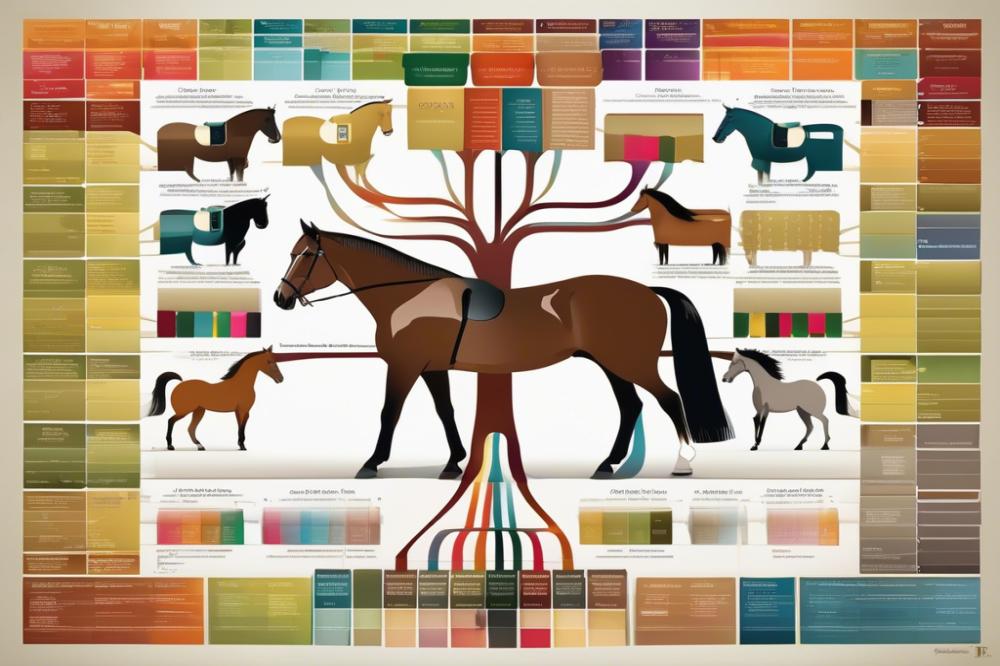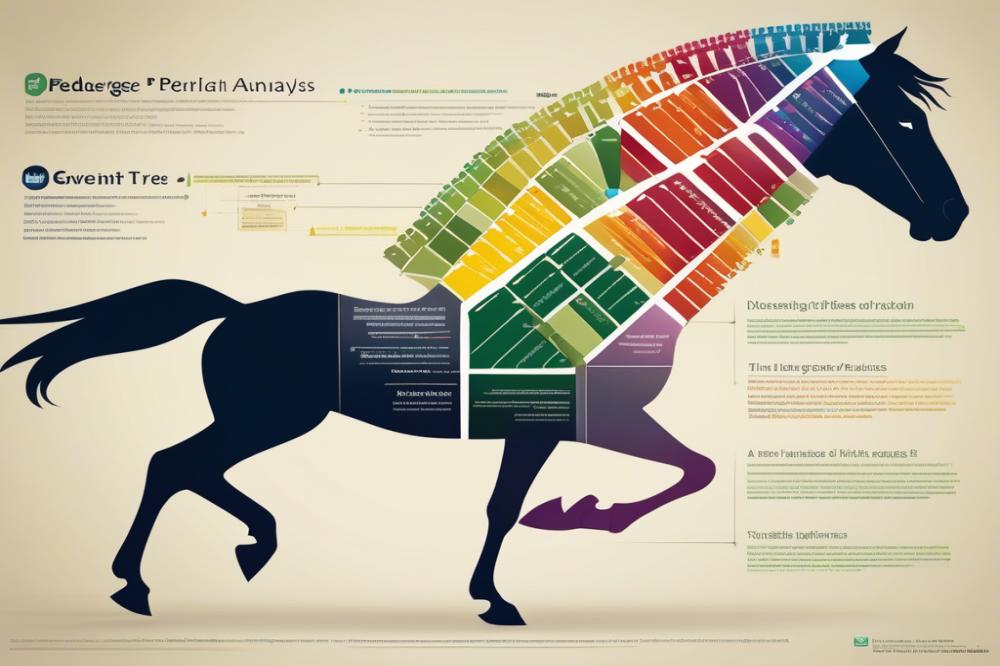Understanding Pedigrees: What to Look For
pedigree analysis plays a crucial role in horse breeding. It unveils the genetic lineage of a horse, allowing breeders to make informed decisions. This understanding helps in recognizing the traits that might be passed down from one generation to the next. Knowing a horse’s background is essential for achieving desirable qualities in future offspring.
When breeders look closely at a pedigree, they can identify potential strengths and weaknesses. This knowledge translates into better breeding choices, fostering the development of horses that excel in their respective disciplines. Selecting a sire or dam based on their pedigree can lead to improved performance and health in foals.
The goal of this article is to guide readers through the key elements of analyzing pedigrees. We will explore significant factors to consider when evaluating a horse’s ancestry. With this information, breeders can enhance their understanding and make better choices when it comes to breeding their horses.
Understanding pedigree analysis

Pedigree analysis plays a vital role in horse breeding. It involves studying the lineage of horses to make informed breeding decisions. Each horse comes from a long line of ancestors, and understanding this family tree can reveal much about potential traits.
A family tree, also known as a pedigree chart, outlines the relationships between horses and their ancestors. This diagram typically includes several generations. It helps breeders visualize how traits might be passed down. By tracking lineage, breeders can identify patterns of success and potential problems rooted in genetics.
Ancestral records are crucial in evaluating horses. They provide a historical context for each horse’s background. With accurate records, horses’ strengths and weaknesses can be better understood. Knowing a horse’s lineage can guide breeders toward choosing mates that will enhance desirable qualities. Such qualities might include speed, strength, or temperament, among others.
When analyzing these records, breeders look for notable ancestors. Horses that have achieved significant accomplishments often contribute desirable traits to their offspring. Trends in performance can often emerge from studying these records closely. Breeders who pay attention to these details can make choices that lead to healthier, more successful horses.
Tracking the lineage also helps avoid genetic issues. Some breeds have a higher chance of inherited diseases. By being aware of these risks, breeders can take steps to minimize them. This proactive approach protects both the animals and the investment made in breeding.
In summary, examining family trees and lineage provides important insights. Breeders benefit from understanding pedigrees and the history behind each horse. Ancestral records serve as a valuable tool in this process, guiding decisions that impact future generations. Through careful consideration of these factors, the world of horse breeding continues to thrive.
Identifying inheritance patterns

Understanding how traits are passed down in horses can be intriguing. In horse breeding, recognizing common inheritance patterns helps breeders make informed decisions. Several patterns exist, but the most prominent ones include autosomal dominant, autosomal recessive, and sex-linked traits. Each of these patterns influences the way characteristics appear in the offspring.
In autosomal dominant inheritance, only one copy of a dominant gene is needed for a trait to be expressed. This means that if one parent carries the trait, there is a strong chance the offspring will inherit it as well. For example, if a stallion has a distinctive coat color that is dominant, his foals are likely to exhibit that same color. Breeders must carefully assess the lineage to predict these outcomes.
On the other hand, autosomal recessive traits require two copies of the recessive gene for the characteristic to manifest. This situation can be trickier. If an individual has one dominant and one recessive gene, the dominant trait will show. In this scenario, both parents must carry the recessive gene for their offspring to potentially express the recessive trait. It’s essential to analyze the pedigree closely to determine the risk of recessive traits surfacing.
Dominance and Recessiveness in Breeding
The impact of dominant and recessive traits is significant in breeding decisions. Dominant traits can quickly spread through a breeding program since they often appear in many foals. Breeders sometimes aim to enhance desirable dominant traits in their stock. However, recessive traits can remain hidden within a lineage for generations. Thus, it becomes vital to track family histories for indications of these hidden characteristics.
In addition to coat color, other traits like gait and temperament also follow these inheritance patterns. This can influence the overall quality of the horse. Breeders must decide what traits to prioritize. Will they focus on the strong, dominant characteristics? Or will they consider the potential for hidden recessive traits to emerge? These decisions shape the future of their breeding programs.
Ultimately, recognizing these inheritance patterns allows breeders to enhance their breeding goals. Knowledge of how traits are passed through generations can lead to achieving specific objectives. By being mindful of both dominant and recessive traits, one can make more strategic choices in breeding. The journey through pedigrees reveals the complex tapestry of genetics in horses, guiding breeders toward successful outcomes.
Interpreting Pedigree Charts

Reading a pedigree chart can seem daunting at first. However, it becomes easier once you understand its components. A pedigree chart displays familial relationships, helping to trace lineage. Each chart typically organizes family members into different generations. The layout makes it simple to see how individuals are connected.
At the top of the chart, you’ll usually find the oldest generation. Moving downward, each level represents a newer generation. Horizontal lines connect parents to their children, showing direct relationships. Symbols are used to denote males and females. A square typically represents a male, while a circle indicates a female.
Additionally, names or initials may accompany each symbol. This identification is key for tracking specific traits or lineage. When reviewing the chart, be aware of any connecting lines between symbols. These lines signify marriages or partnerships, illustrating how families intertwine.
A comprehensive pedigree is crucial for meeting breed standards. Breeders often rely on these charts to identify desirable traits. A strong pedigree showcases health, temperament, and conformation. Understanding the chart can help potential owners make informed decisions.
Pay attention to any noted information about health issues or genetic traits. Some charts include information about inherited conditions. This knowledge can be essential for predicting future health outcomes in offspring. Therefore, always consider the entire chart and all its details.
Assessing Genetic Health
Checking for genetic health issues in pedigrees is crucial for any responsible breeder. Each breed has its own set of potential disorders that can affect the horse’s well-being. Knowing these issues can help in making informed decisions. A pedigree often reveals valuable information about inherited traits. Understanding family history aids in recognizing potential problems.
Common genetic disorders in horse breeds include conditions like equine polysaccharide storage myopathy (EPSM), which affects muscle function. Other examples are congenital stationary night blindness (CSNB) and hereditary equine regional dermal asthenia (HERDA). These disorders can vary greatly in their impact on a horse’s life. Some may lead to significant health challenges while others could be relatively mild.
Minimizing health risks in breeding practices requires careful planning. First, it’s vital to do thorough testing. Genetic testing can identify carriers of certain disorders, allowing breeders to avoid risky pairings. Educating yourself on each breed’s specific health concerns is also important. Regular veterinary check-ups can help catch issues early.
Maintaining a diverse gene pool is another effective strategy. The risk of inherited conditions increases in horses that are closely related. When breeding, seek out different bloodlines to promote genetic diversity. Collaboration with other breeders can also lead to healthier outcomes. Sharing knowledge about health backgrounds promotes better breeding decisions.
Developing a Breeding Strategy
Analyzing pedigrees plays a crucial role in forming a solid breeding strategy. A breeder must consider the traits they wish to promote in their animals. It’s important to look for individuals that have desirable characteristics. This includes traits like temperament, health, and performance records. The right pairings can improve not only appearance but also functionality in various tasks or competitions.
Selecting breeding pairs requires careful thought. Some breeders focus on matching similar traits to strengthen desired qualities. Others might choose to pair animals with contrasting features to create a diverse gene pool. Review the history of each candidate to gauge potential offspring. Understanding past successes and setbacks of these individuals can guide choices effectively.
Balancing pedigree strength with practical performance metrics is essential. Great-looking numbers in a pedigree might look impressive, but actual performance often tells a different story. Evaluate how well the animals have completed specific tasks or competitions. Not every top pedigree produces superior animals in the field. A good strategy takes both lineage and real-world abilities into account.
Sometimes, the best breeding choices come from unexpected combinations. A unique lineage may not always shine on paper, yet it can deliver excellent offspring. Breeders should be open to exploring various options instead of sticking rigidly to popular choices. Utilizing comprehensive records can enhance decision-making processes significantly.
Mapping out a long-term plan can be beneficial too. Consider how your breeding decisions will affect future generations. Establish objectives that align with both the pedigree strengths and performance outcomes. This foresight can help maintain a consistent quality in breeding throughout the years.
Comparative Analysis in Pedigree Dogs
Understanding pedigree analysis in horses offers a fascinating lens through which to view similar processes in pedigree dogs. Both animals benefit from a careful examination of their lineage. Horse breeders often track thoroughbred lines meticulously, assessing how traits are passed down through generations. In the same way, dog breeders look at bloodlines to determine the potential characteristics of their dogs. Breeding decisions align closely with the ancestry of the animals involved.
Several methods exist for examining breeding lines in purebred dogs. Initially, one must collect data from reliable sources like kennel clubs, breed registries, and performance records. This information provides insight into lineage. A breeder might focus on traits such as temperament, size, or health issues. Each generation’s qualities impact the next, and understanding this is critical.
Remarkably, appreciating pedigree is relevant not just for dogs, but across multiple species. In equine breeding, for example, certain lineages produce exceptional racing abilities or conformation. This parallels how dog breeders select for specific functions, such as herding or companionship. Comparative analysis across species can yield broader insights into genetics and animal behavior.
Moreover, looking at these factors helps breeders make informed decisions. This could involve selecting mates with a history of desirable traits to reduce the risk of genetic disorders. Each breed has its own set of characteristics and typical issues that can be somewhat predicted based on lineage.
Both fields highlight the importance of responsible breeding practices. Focusing on maintaining diverse gene pools can be critical. In breeding, a lack of genetic diversity can lead to inherited health problems. Plainly put, breeders should aim for healthy, well-adjusted animals by considering their backgrounds.
Bringing It All Together
Understanding pedigrees is essential for anyone involved in horse breeding. Analyzing the family tree of a horse reveals vital information about its lineage. Patterns of inheritance play a crucial role in determining the traits and abilities that future generations might inherit. Knowledge of these factors can greatly influence breeding decisions.
Breeders can benefit significantly from careful examination of a horse’s pedigree. Specific traits such as speed, stamina, and temperament often appear in descendants as a result of inherited characteristics. Identifying top-performing ancestors helps breeders choose the right pairings to maintain or enhance desirable qualities. This level of insight is invaluable.
Remember, no two pedigrees are identical. Each one carries a distinct story of lineage and genetics. Utilizing pedigree information effectively allows breeders to make well-informed choices. These conscious decisions increase the potential for success within the breeding program. Ultimately, embracing the art of pedigree analysis leads to stronger horses and a more fruitful breeding journey.



